Products sold in the United States must generally be labeled or marked according to the requirements in the applicable regulations. Some labeling requirements apply to all products, while others only cover certain types of products, materials, or even age groups.
Commonly, a single product is subject to several different product labeling and marking requirements, which is why you can often see a plethora of product information and compliance marks on everything from phone chargers to baby clothing.
This guide serves as an introduction to US product labeling and marking requirements for clothing, electronics, children’s products, furniture, and many other products.
Note that this guide covers both federal and some state-level labeling requirements. That being said, this is not an exhaustive list of labeling requirements in the United States.
Content Overview

FREE CONSULTATION CALL (US, EU & UK)
- Request a free 30-minute call with Ivan Malloci to learn how we can help you with:
- Find product requirements
- Certification and labeling
- Lab testing
Country of Origin Marking
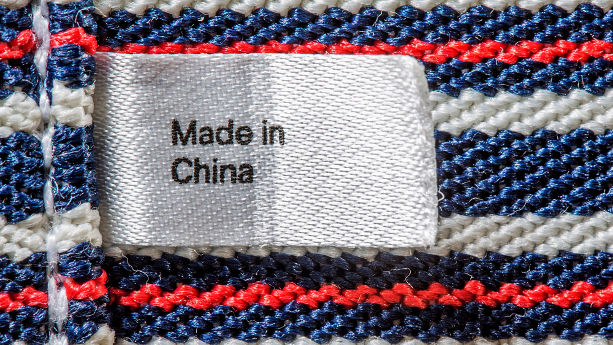
Country of origin marking is mandatory for almost all consumer products sold in the United States. For example, products manufactured in Vietnam should be labeled as Made in Vietnam.
The marking can either be applied to the product or the packaging – depending on the size and various exemptions. However, many brands choose to apply the country of origin marking both to the products and the packaging, as it can be difficult to navigate the exemptions.
Examples
- Made in China
- Made in Vietnam
- Made in USA
- Made in Germany
Additional requirements
Further, special rules concerning country of origin marking for the following products:
- Watches
- Native American style jewelry
- Native American style accessories
- Assembled products
Recommended article: Country of Origin Requirements in the United States: An Overview
16 CFR Part 323: Made in USA
16 CFR Part 323 defines “Made in the United States” as products, including its components, that are built, crafted, created, made, manufactured, or produced in the United States.
Products should not bear the “Made in the United States” label unless the following take place within the United States:
- The product’s processing
- The product’s final assembly
- Sourcing of the product’s components
CPSIA Tracking Label
Toys and other children’s products (intended for 0-12 years) imported or manufactured in the United States must carry a permanent CPSIA tracking label that provides the following identifying information:
- Manufacturer name
- US address
- US phone number
- Website
- Date of production
- Production location
- Batch number
Tracking labels facilitate the identification and recall of non-compliant and unsafe products.
What is a Batch number?
A batch number is a combination of letters, numbers, or symbols that identifies the production run, manufacturing facility, and country.
Example: SKU-YYMM-01-CN
Recommended article: CPSIA Tracking Label Guide For Importers & Amazon Sellers
Choking warning labels (CPSIA)

16 CFR Part 1500.19 sets choking hazard labeling requirements for:
- Small parts
- Balls and small balls
- Latex balloons
- Marbles
The warnings differ slightly, but must contain the warning symbol, the word “WARNING”, and the words “CHOKING HAZARD” before the actual warning.
Also, while the warning for small parts is only necessary for products that are meant to be used by children who are between 3 and 6 years of age, other warnings target different age groups.
Recommended article: Warning Labeling Requirements for Children’s Product in the United States
Other warning labels (CPSIA)
There are warning label requirements that apply to specific products covered by the CPSIA. These requirements come from specific CPSC standards, or ASTM standards that are incorporated by reference in CPSC standards.
Examples
a. 16 CFR 1250 – Safety Standard Mandating ASTM F963 for Toys incorporates by reference ASTM F963, which in turn sets warning requirements.
b. 16 CFR Part 1213 – Safety Standard for Entrapment Hazards in Bunk Beds sets warning requirements directly.
c. 16 CFR Part 1241 – Safety Standard for Crib Mattresses sets warning requirements directly.
Textiles Labeling
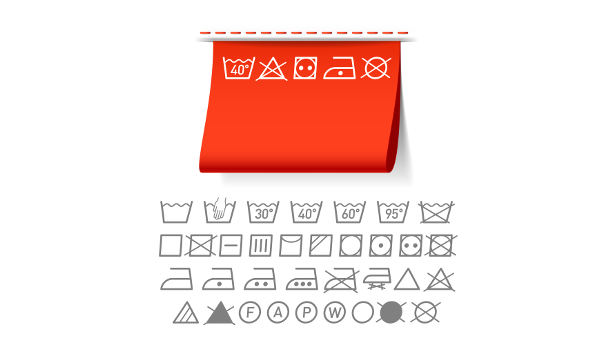
The Textile, Wool and Fur Acts and Rules require importers and manufacturers of some textile, wool, and fur products to comply with product-specific labeling requirements. Additionally, there are care labeling requirements for textile wearing apparel.
Textile, Wool and Fur Acts and Rules
16 CFR Parts 300, 301, and 303 cover the Textile, Wool and Fur Acts and Rules, and contain labeling requirements for products such as:
- Wearing apparel
- Fur products
- Wool products
Importers and manufacturers of textile fiber, wool, and fur products must provide on their product’s labels information such as the following:
- Fiber content
- Manufacturer’s name or registered identification numbers
- Country of origin
Care Labeling of Textile Wearing Apparel & Certain Piece Goods
Manufacturers must provide care labels on their clothing textile products. They must either use the care terms found in Appendix A to 16 Part 423, or the symbols found in ASTM D5489-96c Standard Guide for Care Symbols for Care Instructions on Textile Products.
Manufacturers can alternatively use also care terms and symbols on their care labeling.
Is size mandatory on the textile label?
The provision of sizes on textile labels is not mandatory. However, it is practical and therefore strongly recommended to add sizes to labels, as consumers and retailers expect the provision of such information.
Consumers might not buy, or return once bought, clothing that does not indicate size.
Recommended article: Textiles Labeling Requirements in the United States
Guides for Select Leather and Imitation Leather Products
The Leather Guides provide guidance regarding how not to misrepresent leather products on labels that bear information such as the following:
- Material content
- Trade names
- Properties (e.g. “waterproof”)
If the product is made of or includes imitation leather, the label should disclose the product’s material, such as the following information:
- “Not leather”
- “Imitation leather”
- “Simulated leather”
- “Top Grain Cowhide With Simulated Pigskin Grain”
Recommended article: Leather Product Regulations in the United States: An Overview
FCC 47 CFR Part 15 Device Labeling Requirements
FCC 47 CFR Part 15 regulates radiofrequency (RF) energy emissions on electric and electronic devices, as they can negatively interfere with other devices operating within the 9 kHz – 3000 GHz RF range.
The regulation also establishes information on proper labeling, such as the inclusion of an FCC logo, an FCC ID, or a statement declaring conformity.
The labeling information is different for:
a. Unintentional radiators, that is, devices that do not emit frequency energy wirelessly (e.g. electrical coffee machine)
b. Intentional radiators, that is, devices that intentionally generate frequency energy (e.g. wi-fi device)
Unintentional radiators

Unintentional radiators must bear a unique label that includes information such as:
- Product identification (trade name and model type/serial number)
- Compliance statement
- FCC logo (optional)
The user manual and the device’s packaging or removable label must bear the compliance statement if the product:
- Is too small for the compliance statement
- Does not have an electronic label display
Recommended article: FCC Unintentional Radiators: A Practical Guide
Intentional radiators
Intentional radiators must bear two labeling items:
- An FCC ID (grantee code and product code); and
- Compliance statement
If the product is too small or does not have an electronic display for the label, the importer or manufacturer must place the compliance statement in the user manual and the device’s packaging or a removable label.
Recommended article: FCC Intentional Radiators: A Practical Guide
Energy Labeling Rule
16 CFR Part 305, Energy and water use labeling for consumer products under the energy policy and conservation act (“Energy Labeling Rule”), covers products such as energy and water use appliances.
Labeling Information
The Energy Labeling Rule requires importers and manufacturers of energy and water appliance products to include information on labels such as the following on their products:
- Operating cost
- Water use rate
- Conformance with relevant standards
- Energy consumption
- Energy efficiency
- Energy cost
- Water cost
The above information may be different according to the product (e.g., lighting, washing machine) and should be placed in the following places:
- On product catalogs
- On labels attached to the product
- In written advertising
- In broadcast advertising
- On printed matter at point of sale
Appendix L to Part 305 provides examples of prototype labels that include instructions regarding font, color, label size, and so on. The specifics of each instruction depend on the appliance that the label is attached to, e.g., the font and label sizes for refrigerator-freezer energy labels differ from those for specialty consumer lamp energy labels.
Product Examples
- Dishwashers
- Furnaces
- Television sets
- Faucets
- Ceiling fans
Recommended article: Energy Policy and Conservation Act (EPCA) Guide: An Overview
Mattress Labels
Mattresses are subject to labeling requirements set out by the following standards:
a. 16 CFR Part 1632 – Standard for the Flammability of Mattresses and Mattress Pads
b. 16 CFR Part 1633 – Standard for the Flammability (Open Flame) of Mattress Sets
Importers and manufacturers should provide labels that bear information such as the following:
- Protection instructions
- Importer’s or manufacturer’s name and address
- Compliance statement
- Information concerning fire retardants
Recommended article: Mattress Regulations in the United States: An Overview
Art Material Labels
The CPSC sets labeling requirements for art materials under the Labeling of Hazardous Art Materials Act (LHAMA).
Labeling information
ASTM D-4236, which is incorporated by reference in 16 CFR Part 1500, requires labeling information such as the following:
- Statement of conformance
- Signal word “WARNING” (when chronic hazards exist)
- List of potentially chronic hazards
- Name of chronically hazardous components
- Safe handling instructions
- List of sensitizing components
- Combined statement (for more than one chronic hazardous component)
- Phrases stating information sources
- Chronic hazard statements
- Precautionary statements
Product examples
Here are a few examples of products subject to LHAMA:
- Paints
- Colored pencils
- Glues
- Model and Hobby kits
Recommended article: Labeling of Hazardous Art Materials Act (LHAMA): An Essential Guide
Lithium Battery Labels
Different types of batteries have their own labeling requirements in various regulations. We briefly explain that below.
Button cell and coin battery label
16 CFR Part 1263 sets warning label requirements for consumer products that contain button cell or coin batteries.
Note that toy products for children under 14 years old are exempt from the requirements of 16 CFR Part 1263 if:
a. These products are designed, manufactured, or marketed as playthings for children below the age of 14, and
b. Comply with the battery accessibility and 16 CFR Part 1250’s labeling requirements.
Part 1263 also exempts zinc-air button cell and coin batteries.
Recommended article: Button and Coin Battery Safety Standards and Regulations in the US
Lithium batteries label
49 CFR Part 173.185 sets packaging labeling requirements for lithium batteries.
For instance, packages that contain lithium batteries must bear the following information:
- The lithium battery mark
- The UN number (such as UN 3090)
- The word “OVERPACK” when applicable
The outer package of lithium batteries whose net weight does not exceed 5 kg must carry certain words, such as: “LITHIUM METAL BATTERIES—FORBIDDEN FOR TRANSPORT ABOARD PASSENGER AIRCRAFT”.
Recommended article: Hazardous Materials Regulations: An Essential Guide
Batteries containing mercury label
The Mercury-Containing and Rechargeable Battery Management Act requires that products containing regulated rechargeable batteries that cannot be easily removed to bear:
a. A chasing arrows recycling symbol
b. The chemical name or the abbreviation “Ni-Cd” and the phrase “BATTERY MUST BE RECYCLED OR DISPOSED OF PROPERLY” (for nickel-cadmium batteries)
c. The chemical name “LEAD” or the abbreviation “Pb”, the words “RETURN”, “RECYCLE”, and if sealed the phrase “BATTERY MUST BE RECYCLED” (for lead-acid batteries)
d. The statement “CONTAINS NICKEL-CADMIUM BATTERY. BATTERY MUST BE RECYCLED OR DISPOSED OF PROPERLY.’” or “CONTAINS SEALED LEAD BATTERY. BATTERY MUST BE RECYCLED” on the rechargeable product and its packaging.
Wooden Handicrafts Label
The USDA APHIS sets labeling requirements for wooden handicrafts.
Labeling information
7 CFR Part 319-40-9(c) requires identity labeling and markings that indicate the following of wooden handicrafts:
a. The general nature and quantity.
b. Country and locality, if known, of where the harvested tree came from.
c. Importer’s name and address.
d. The consignee’s name and address.
e. The identifying shipper’s mark and number; and
f. Permit number (if issued) that authorizes the handicraft’s importation into the United States.
Product Examples
- Baskets
- Bird houses
- Rustic lawn furniture
- Garden fencing
- Carvings
Recommended article: Wood & Bamboo Product Regulations in the United States: A Complete Guide
TSCA Labels
The Toxic Substances Control Act sets labeling requirements for various products, such as composite wood products, and products that contain toxic substances such as PCBs. We explain below the requirements regarding composite wood products.
Labeling information
Labels of imported composite panels, or bundles of such, must bear the following:
- The panel producer’s name
- Lot number
- The EPA TSCA Title VI TPC number
- Statement that products are TSCA Title VI certified
Product Examples
- Hardwood plywood
- Particleboard
- Medium density fiberboard
Recommended article: Toxic Substances Control Act (TSCA) for US Importers: A Complete Guide
Pesticide Products Label
The Environmental Protection Agency (EPA) sets labeling requirements regarding pesticide products.
Pesticidal Claims
A substance is deemed to be used for pesticidal purposes if the seller or distributor claims – including in the labeling – that:
a. The substance can be used as a pesticide; or
b. The substance contains active ingredients and is it can be used for manufacturing pesticides.
Other labeling information
According to 40 CFR Part 156.10, pesticide products must bear a label containing the following information:
- The product’s name, brand, or trademark
- The producer or registrant’s name and address
- The net contents
- The product registration number
- The producing establishment number
- An ingredient statement
- Hazard and precautionary statements
- Directions for use
- Use classifications
Product Examples
- Insecticides
- Fungicides
- Rodenticides
- Antimicrobials
- Herbicides
- Pest repellants and attractants
Recommended article: Federal Insecticide, Fungicide, and Rodenticide Act (FIFRA) Guide
EPA-regulated devices Label
Pesticide devices are subject to FIFRA labeling requirements.
Labeling information
Pesticide devices covered by FIFRA are considered misbranded if the label:
a. Contains false and misleading designs, graphics, or statements.
b. Does not bear the establishment number
c. Contains the required information, but it is not prominently displayed
d. Does not contain proper usage directions
e. Does not carry an adequate warning or caution statement.
Product Examples
- UV lights
- Ultrasonic devices
- Replacement parts (e.g., bulbs)
Recommended article: See link in the above section
USDA Organic Seal
The USDA Organic Seal is a federally-protected official mark used by certified companies and farms to indicate that their products are organic.
Labeling information
There are four different cases to take into consideration:
a. Products that contain 100% organic ingredients may bear a “100 Percent Organic” claim and/or the USDA organic seal.
b. Products containing at least 95% organic ingredients may bear an “Organic” claim and/or the USDA organic seal.
c. Products that contain at least 70% of organically-produced ingredients may use the “Made with Organic [insert 1–3 ingredients]” claim, but must not carry the USDA Organic Seal.
d. Products that contain less than 70% of organic content must not bear the word “organic” or the USDA Organic Seal.
Note that, in general, the organic ingredients should also be listed on the label. You can find more information on this page.
Product Examples
- Textiles
- Beef
- Fruits
- Nuts
California Proposition 65 Warning Label
California Proposition 65 restricts around 900 chemicals and heavy metals in consumer products sold in California.
As such, you can either get the product lab-tested to prove that it doesn’t contain any of the listed chemicals, or ensure that the product carries a warning label.
CA Prop 65 Warning Label Example
“This product can expose you to chemicals including [name of chemicals] which are known to the State of California to cause [cancer/birth defects or other reproductive harm]. For more information go to www.P65Warnings.ca.gov”
Recommended article: California Proposition 65 Guide for US Importers & Amazon Sellers
US Law Label
The law label is required in many US states for bedding, plush toys, bean bags, or other stuffed products. Its purpose is to inform the consumer of the filling materials, and the company selling the product.
Label Information
- “Do Not Remove” Statement
- Filling materials (Weight %)
- Uniform Registry Number (URN)
- Company Name
Uniform Registry Number (URN)
Note that you might need to register to obtain a Uniform Registry Number (URN).
Recommended article: US Law Label Requirements for Importers: A Complete Guide
UL Mark
The Underwriter Laboratories (UL) mark indicates that the product has passed the UL testing and certification process. As such, you cannot affix the UL mark to a product that has not passed the relevant testing.
UL Marks
- UL Listed
- UL Certified
- UL Classified
- UL Recognized Component
- UL Performance Verified
UL Standards Examples
- UL 1642 – Standard for Lithium Batteries
- UL 20 – General-Use Snap Switches
- UL 2595 – General Requirements for Battery-Powered Appliances
- UL 2089 – Standard for Vehicle Battery Adapters
- UL 1740 – Standard for Robots and Robotic Equipment
- UL 879A – Standard for LED Sign and Sign Retrofit Kits
Note that UL compliance is not mandatory unless a standard is incorporated by reference in a regulation. One such standard is UL 4200A – Standard for Safety for Products Incorporating Button or Coin Batteries or Coin Cell Batteries, which is incorporated by reference into 16 CFR Part 1263.
Even if they are not always mandatory, compliance with UL standards is strongly recommended if you are importing, exporting, or manufacturing electronic products for the US market.
Recommended article: UL Standards for Importers and Amazon Sellers: An Essential Guide
ETL Mark (Intertek)
Intertek has its own compliance program called the ETL Certification program. Products that pass the necessary testing can use the ETL Mark, which signals compliance with standards in the United States and Canada.
The ETL Mark is therefore not mandatory but still recognized by consumers, retailers, and the authorities as a reliable compliance mark.
Recommended article: ETL Certification and Marking: A Complete Guide
NRTL Mark
For some products used in industry, construction, and more, it is mandatory under OSHA’s Occupational Safety and Health Standards (29 CFR Part 1910.7) to undergo testing and certification at a Nationally Recognized Testing Laboratory (NRTL).
Each NRTL is known for a certain set of test standards and utilizes its own distinct registered certification mark to indicate that a product complies with the relevant product safety test requirements.
After an NRTL certifies a product as being compliant with relevant standards, it permits the manufacturer to attach an NRTL mark to the product.
List of NRTL
The NRTL mark you receive on your certified product depends on which NTRL you choose to test your products. Here are some examples:
a. CSA Group Testing and Certification Inc.
b. Intertek Testing Services NA, Inc.
c. TÜV SÜD Product Services GmbH
Click here for more examples of NRTL marks.
Product Examples
- Automatic sprinkler systems
- Portable fire extinguishers
- Employee alarm systems
- LPG storage and handling systems
Recommended article: NRTL Approval for Importers and Manufacturers: A Summary
Product Packaging Labeling Requirements
If you import or manufacture products in the United States, you are also required to abide to relevant product packaging labeling requirements established in acts and regulations such as the following:
- Fair Packaging Labeling Act (FPLA)
- Poison Prevention Packaging Act (PPPA)
- Uniform Packaging and Labeling Regulation (UPLR)
- Bag suffocation warning
- ISPM 15 Mark
- Packaging recycling symbols
Amazon Product Labeling Requirements
Products sold on Amazon.com must comply with mandatory labeling requirements and other product regulations. Further, Amazon.com can request product and packaging photos demonstrating that the correct labels are present.
There are also cases when Amazon has even declined product listings for having labels that should not be printed on the product. Amazon is strict about compliance and far more likely to take action against incorrectly or otherwise non-compliant products than US customs or CPSC.













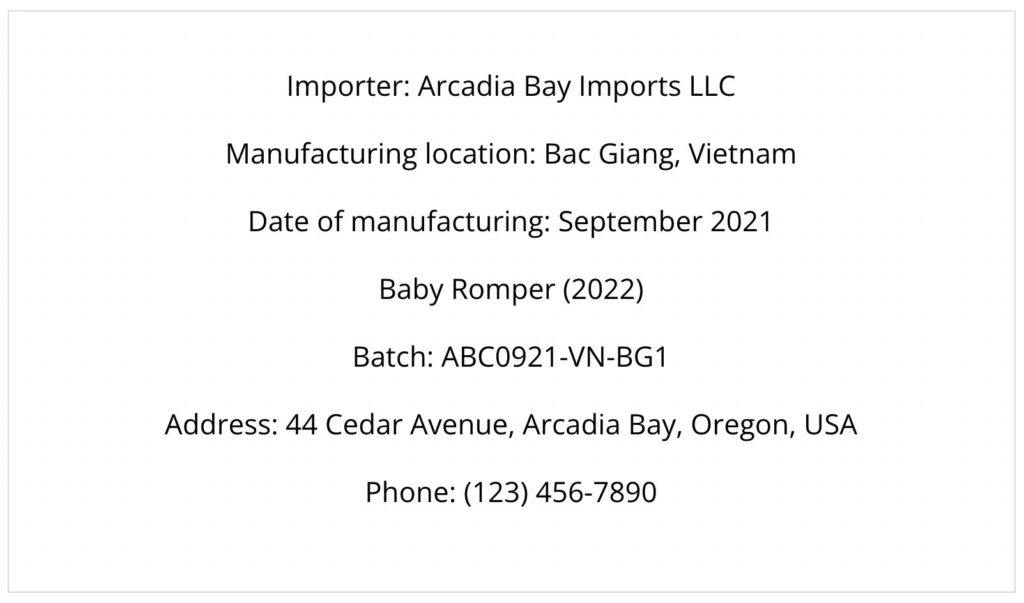
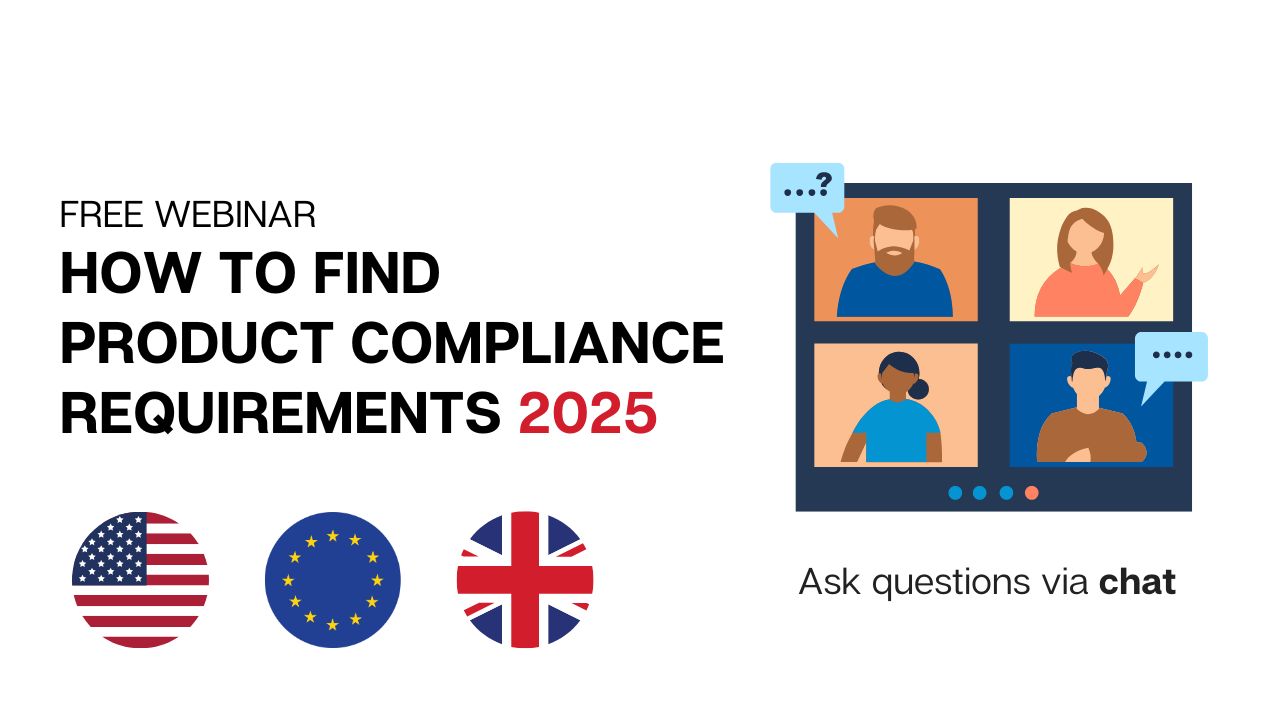

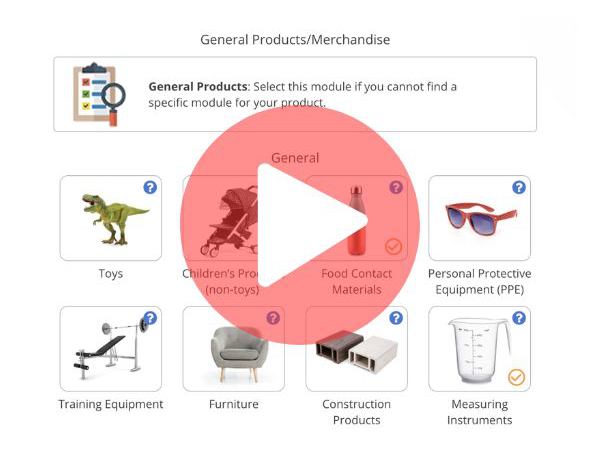
 Create compliance checklists for your product (US, EU & UK)
Create compliance checklists for your product (US, EU & UK)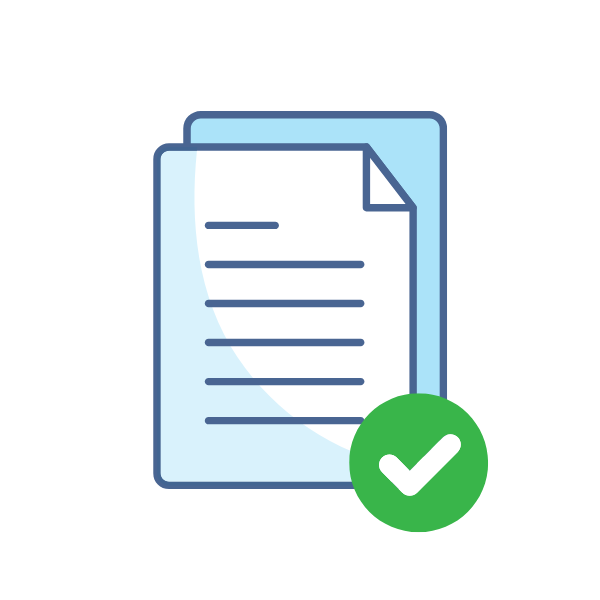 20+ product certificate templates
20+ product certificate templates Create label files
Create label files Book product testing
Book product testing
Trying to find out if translations on multi-lingual packages need to be same size as English?
MADE FOR/ MADE BY.
When we use Made For in Law Label?
When we use Made By in Law Label?
What is manufacturer definition in these US States Laws?
A trading business company is placing their upholstered product order at local factories and selling in US market. Can they registery as Manufacturer even if they are trading business company?
Hi Fredrik
I’m trying to check labelling requirements for the US for natural firestarters made in the UK. Do you know anyone who can tell me what I need to add/change to teh UK pack in order to comply?. Thanks.
Hi, I am a sole proprietor selling on Amazon. For package labeling where it required the manufacturer/importer name, can I put my brand name even though it is not registered or do I have to put my legal name? thanks!
I am a small business I purchased a private label product that just needs to be labeled which I did not do through the company to save on funds. on the label would I be required to put manufactured by the said company with their address then for with my business name?
Hi Frederic ,I have question regarding product packaging , I have recently had a inspection , and the product witch is a set of baby clothing is packed in a clear plastic bag with suffocation warning on the multiple languages but does not specified were the bag was made ? Will that be a problem and What should I do ? Thank You !
Fredrik,
As a consumer, I understand products imported to the US must be labeled with country of origin. It appears that Amazon is a creditable enforcer of that requirement. However the country of origin is rairly ever indicated in the product descriptions on Amazon. If I go to a brick & motar store I can see the product label. Why are internet retailers not required to indicate country of origin in the product descriptions? I would definitely like to know the country of origin of a product before I buy. I would like to see this as an added requirement.
Hey Fredrik, love the site! Very helpful. We are looking to import cosmetic products to the US from the UK. Do you know if it is acceptable to leave our UK business address for this? We don’t have a US address. Thanks! Ross
Hi Ross,
I don’t think we can ever find a source stating if that is acceptable
Hello Andrew,
We are looking to import herbal the from Asia to the US. We are looking for a Cie that can do our marketing and sell online, and eventually re-package (not re-label) into smaller Qantity to meet each customer ‘s demand (ex: from a large box of a 100 small box of 6 items, ship only 5), sell online, and also provide the customer support (ie: complains/ refund etc)
Do you know any such Companies? I heard that some free zones do have such companies?
Thank you
Thanks in advance for your
Hi Frederick,
I’m planning to import a rag doll to import into the USA for our customers brand(fans). This is not really a toy for children but mostly for fans to collect the brand item. Can I mention “ This is not a toy in the labelin”?
Hi Udonis,
I suggest you read this:
https://www.cpsc.gov/Business–Manufacturing/Business-Education/childrens-products#:~:text=The%20law%20defines%20a%20%22children's,with%20further%20explanation%20and%20examples.
Hi Fredrik,
I have “Made in China” under a barcode on the bottom of the packaging. I also want to add the prop65 warning to the bottom underneath this. “Made in China” is set to 6 pts. Can the warning also be 6 pts or does it have to be no smaller than the smallest of info on the packaging?
Thanks!
Hi Matt,
Not sure if there is any specific requirement concerning the font size but it must be readable
Hi Fredrik!
I wanted to ask you if a device uses cell batteries, does it need to have the FCC mark?
Also wanted to confirm if the CPSIA tracking label should be printed on the product or if it is ok to have it on the packing and on the product just the batch number. And if it has to be on the product, could it be with a sticker?
And the last question is to confirm if we could use a sticker label for the legal information on the packaging. Scince we are exporting to different markets we would preffer to design just one packaging and use sticker labels when we need to specify some information.
Thank you in advance!
Kind regards,
Does the CPSIA Tracking Label need to be printed on each unit if selling on Amazon?
Yes, if you intend to sell on Amazon in the USA.
“Children’s products that are designed or intended primarily for use by children ages 12 or younger must have distinguishing permanent marks (generally referred to as “tracking labels”) that are
Affixed to the product and its packaging and
Provide certain identifying information.”
Source: https://www.cpsc.gov/Business–Manufacturing/Business-Education/tracking-label
thanks, Fredrik, for your advice, that is great
Hi, Fredrik,
how are you
would like to ask a silly question, if mandatory labeling such as FCC CE etc. can be printed on a detachable sleeve wrapping around a carton box, but not printed on carton box itself.
Pls advise
Hi Raymond,
Compliance marks must generally be permanently affixed. I think there is some flexibility when it comes to FCC symbols though.
I have some labeling questions on a new product that I am manufacturing in China. I want to make sure I have all the correct labeling on the packaging
Hi Andrew,
I suggest you try our compliance info tool: https://www.compliancegate.com